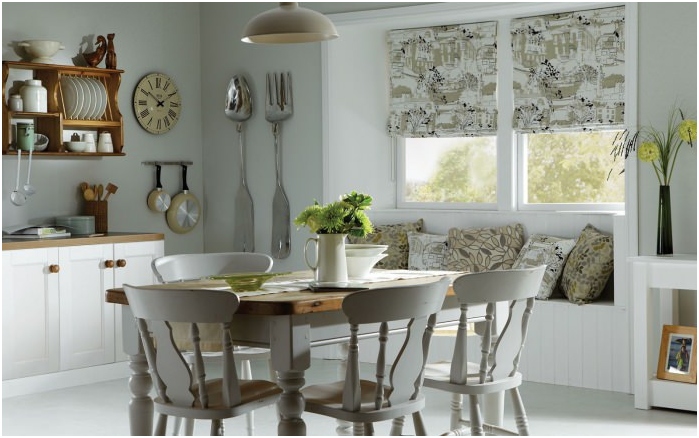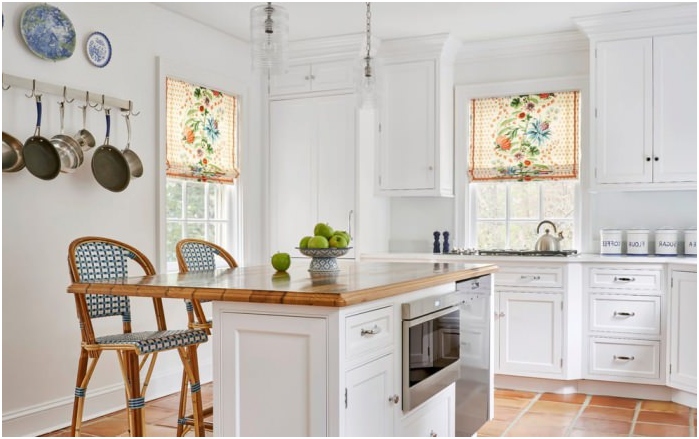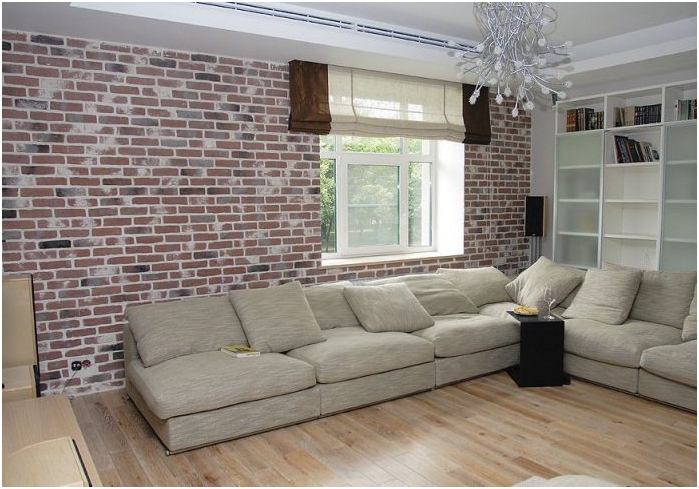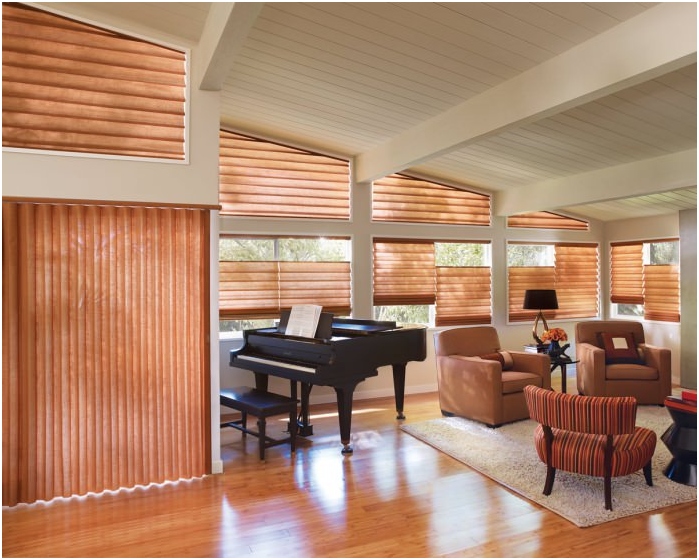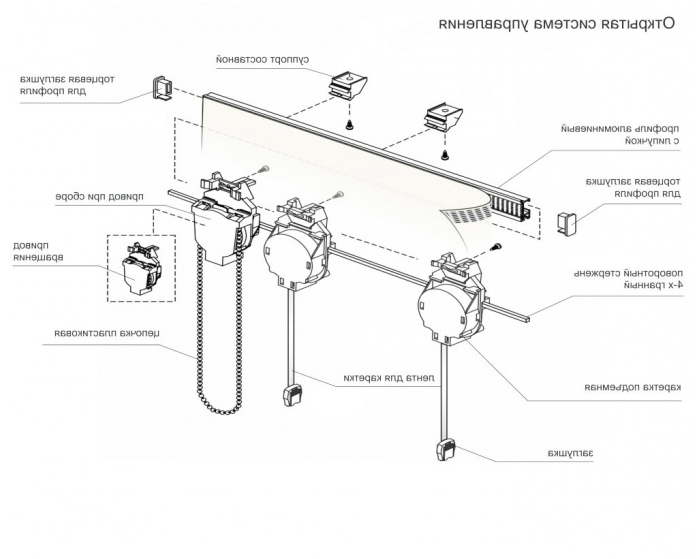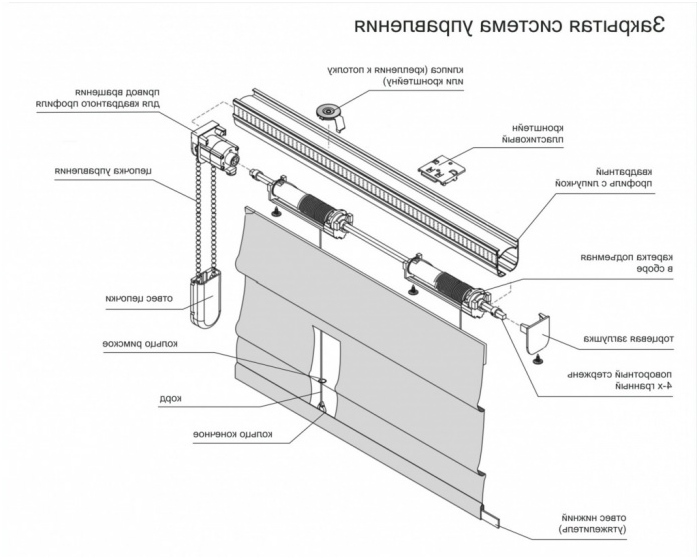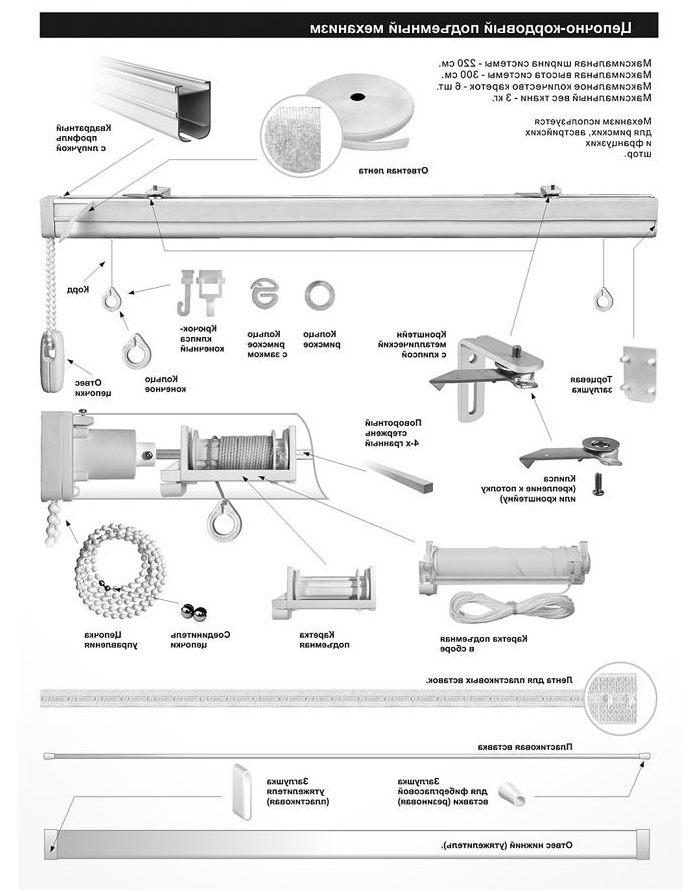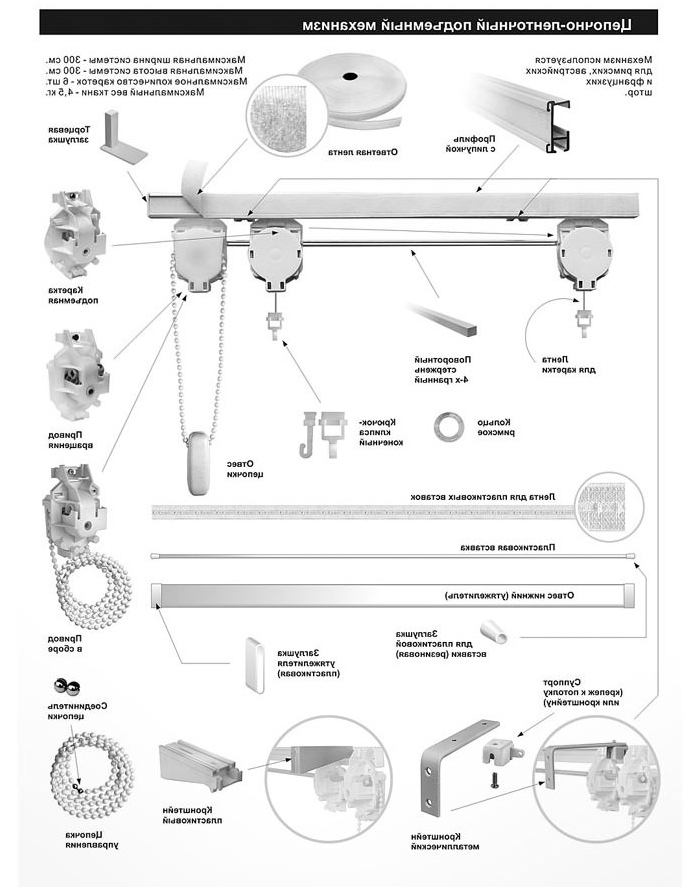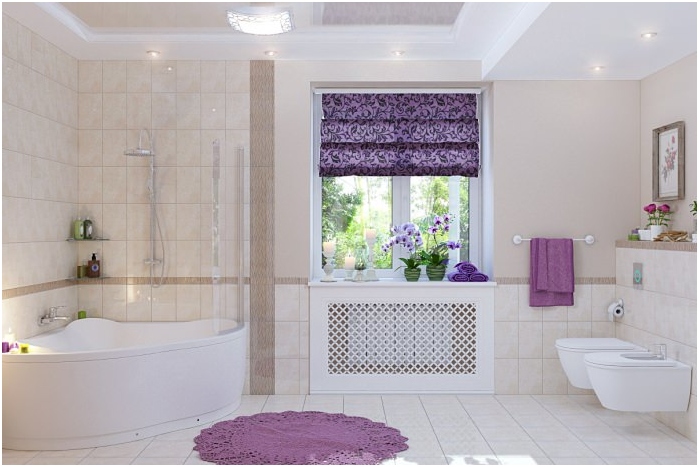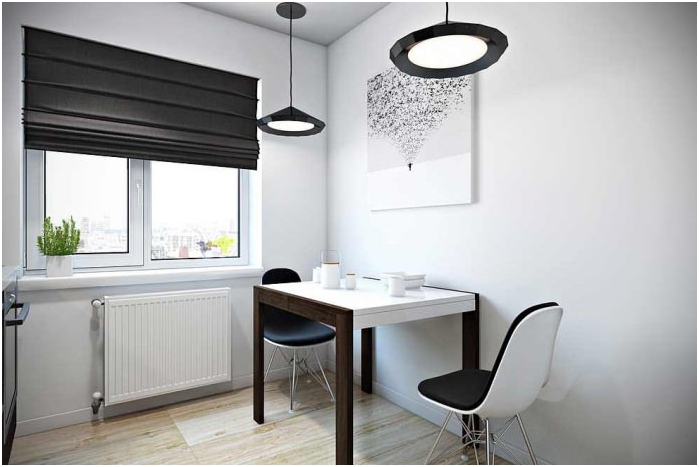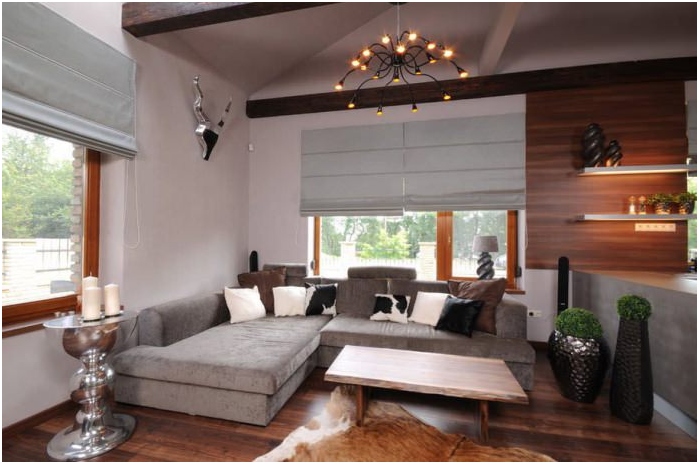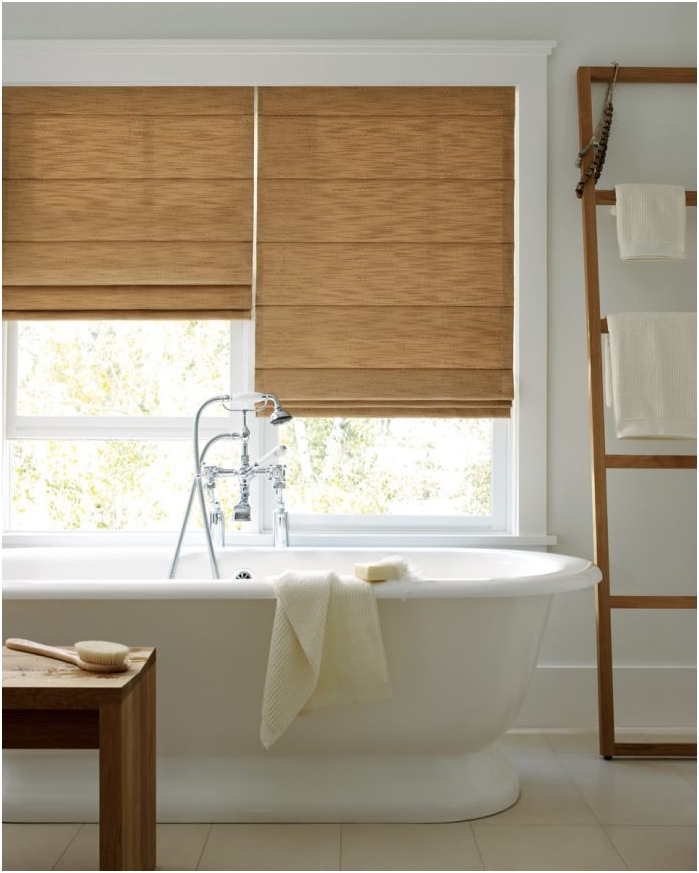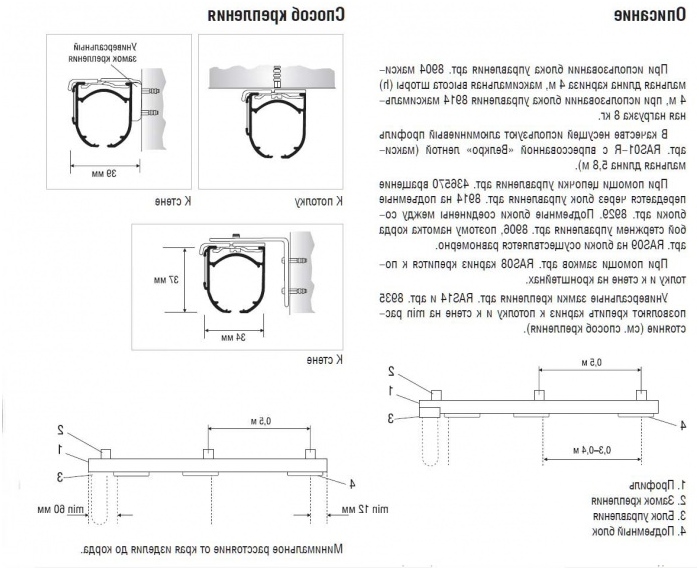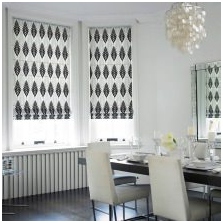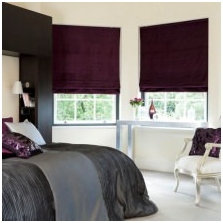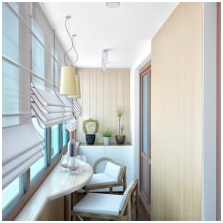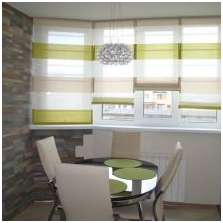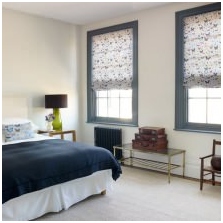The use of Roman blinds in the interior allows you to decorate the window in a modern way, eliminating the laborious maintenance of traditional curtains and curtains. This method of decoration is suitable for almost any style – from classic to the most modern hi-tech and minimalism, and looks especially good in oriental styles.
«Roman» a curtain is grace and practicality, ease of care and modern appearance. In addition, any drawing can be applied to the curtains, including by order, which allows them to be turned into real works of art. Since their appearance in the early 20th century, curtains that have received the name «Roman», immediately became popular, and over the years have not lost their relevance.
Types of Roman cornices
A Roman blind is attached to the window using a special mechanism called a Roman cornice. Such cornices can be different in design, and have characteristic features, according to which they are divided into groups. Consider the options for Roman curtains below..
Eaves attachment methods
One of the classifications of Roman blinds is based on the method of attaching the cornice.
- Mini cornice. The curtain on such a cornice is attached directly to the window frame. Such a mount saves space, and is especially often used in small apartments, as well as in apartments decorated in a minimalist style. With this method of fastening, the window sill is not closed with a curtain, but remains free, and can be used as a writing table, bench, shelf for books, flowers or in any other way.

- Classic cornice. Large curtains are fixed on such a cornice (standard size 1.5 x 1.8 meters). Classic cornices are attached to the wall above the window. The lowered curtain is adjacent to the wall and takes up less space in the room than a traditional curtain.
- Complex cornice. For skylights or arched windows, a special design of roman blinds with beveled or curved cornice has been developed. For such windows, the use of Roman blinds is an excellent decoration solution..
Mechanism
Another classification of Roman blinds is based on the differences in the action of the mechanism that allows you to lower and raise the canvas. In accordance with this, the cornices are divided into:
- eaves with manual lifting mechanism.
- curtain rods with electric lifting mechanism.
Usually this is how curtains with a cord lift are attached..
When decorating a window with a Roman blind, you need to imagine how convenient it will be to use it. And for assessing this convenience, a classification based on the particular details of the lifting mechanism is suitable. In accordance with it, the cornices are divided into the following groups:
- Rope, it is also a cord lifting mechanism. This is the most practical and economical option. They are used in cases where the fabric of which the curtain is made is not too heavy. Very dense and heavy materials can damage the mechanism.
- The rotor chain mechanism is based on rotating blocks and a dense cord, the structure is set in motion due to the movement of the chain. This allows the mechanism to be stopped in any position, respectively, the curtain can be fixed at any height, which is very convenient.
- An automatic curtain control system is the most convenient, but at the same time the least budgetary option. By pressing a button on the remote control, you can open or close the curtain without getting up.
Roman shade design
Roman shades have many advantages over conventional shades, but only if you have correctly chosen the mechanism according to your needs. And for the right choice, you need to have a good idea of how this mechanism works, and what parts it consists of.
Any cornice, regardless of the type of lifting mechanism, contains:
- profile (usually made of metal),
- plumb line for curtains,
- lifting mechanism,
- pulling mechanism,
- additional elements (hooks, chains, Velcro – depending on what pulling and lifting mechanisms are used).
Various versions of Roman blinds can be additionally equipped with the following systems:
- Open lift with a chain mechanism, which ensures tight winding of the curtain cloth on the shaft, the cloth is fixed using hooks on the sides and plastic hooks that are included in the curtain rod.
- Spring mechanism for lifting the curtain with open or closed guides, used for tilted windows, for example, in attics.
What to consider when choosing Roman cornices?
Due to the fact that the design of a Roman shade is seriously different from an ordinary cornice, it is necessary to take these differences into account when choosing fabrics for a curtain fabric, its width and height..
- It is not recommended to use curtains with a width of more than two and a half meters, since a mechanism of this length will not withstand constant loads, and will quickly break.
- A too long canvas will have a lot of weight even if sufficiently light fabrics are used, therefore, in the double-height halls of your own houses, one cornice should not be used for two window openings – the length of the curtain cannot be more than 4.5 m!
- Very dense and heavy fabrics should be used only if the curtain rod has the required strength and reliability.
When decorating a window with a Roman blind, the main task is to choose the right cornice, and you need to select it depending on which canvas will be used. The strength of the cornice should be such that it can withstand the weight of the lifting mechanism and the web, and still have some strength margin. You can increase the strength of the cornice by using an additional attachment point installed in the middle of its length. This will distribute the load evenly and reduce sag..
Benefits of Roman blinds
Let’s consider the main differences between Roman curtains and ordinary curtains to understand why they gained such popularity..
- The curtains can be fixed almost anywhere, even very narrow ones. They are suitable for the design of non-standard window openings of any geometry, are convenient for windows in bay windows, and there is simply no alternative for skylights..
- Roman shades in the interior will not only help to create a unique atmosphere, they are also able to provide complete blackout if you decide to arrange a home theater in the room, reliably protect the bedroom from the morning sunlight, and at the same time do not interfere with the access of daylight if raised them completely.
- Roman shades can be made of any fabric: organza, cotton, silk, wool, velvet, tapestry, velor. Synthetic fabrics are also used, and even film canvases.
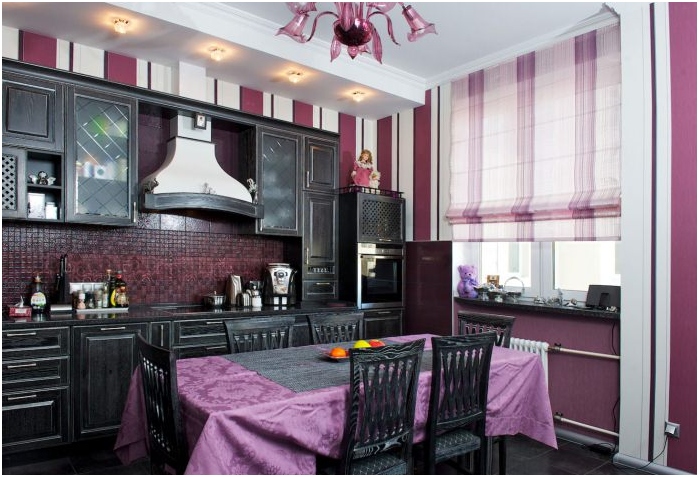
Features of fastening the cornice
Whichever version of Roman blinds you choose, the fastening of their cornice has features characteristic of all types. As a rule, the curtain rod and everything that is needed in order to hang it in the working position comes complete with the canvas, screws are attached, as well as instructions in which the assembly and installation of the product is described in detail, step by step, as well as detailed diagrams and photos of the process. It happens that the instruction is lost, and in this case it is quite difficult to cope with the installation yourself. Therefore, we give recommendations that will help you hang the cornice even if you have lost the instructions.
Procedure:
- Mark in place. The curtain should protrude from the window opening (if mounted on a wall) by about two to three centimeters. This distance can be more or less depending on the specific situation..
- Use a drill to drill holes in the wall for the brackets that hold the cornice on the sides. Secure the bracket in place.
- Whatever the design of a Roman shade, its canvas must be specially weighted with a bar. In some cases, this strip may be packed separately, in which case you must attach it to the canvas. If the bar is already in the canvas, it is necessary to press “sticky” tape its upper edge to the same tape on the cornice, while pressing it with force.
- After completing the work, it is necessary to conduct a performance test by opening and closing the curtain several times. If it rises and falls without twitching and significant effort – you have coped with the task of installing a Roman shade.
Window decoration with a Roman curtain is most often used in cases where it is impossible to hang an ordinary cornice. And then the cornice is attached directly to the window opening along its outer side..
It is best to fasten the cornice to the frame using special “velcro”, in this case, you will not need additional tools and materials. Thus, we see that the Roman blind is the most versatile option for decorating any type of window in any interior. They can not only become a decoration of the room, but also increase the functionality of using windows and the space around them..


